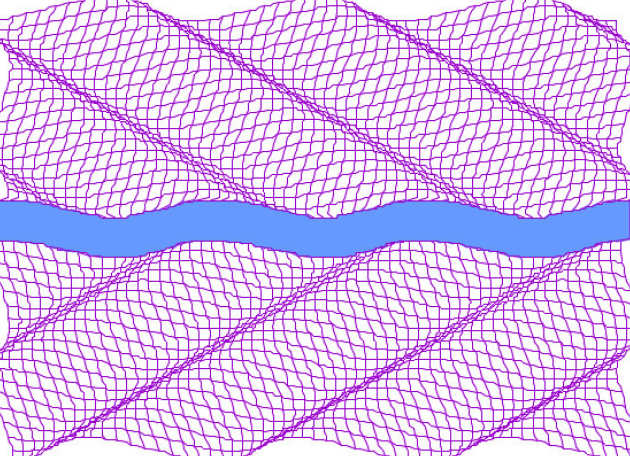
DISPERSE is an interactive Windows program designed to calculate dispersion curves for multilayered structures. With DISPERSE you can:
- Rapidly predict the propagation characteristics for guided acoustic/elastic waves in a wide range of different structures.
- Display the results in many possible ways, including plots of phase velocity, group velocity, or wave number.
- Calculate and display the mode shapes, which describe the distributions (through the structure) of the displacements, stresses, strains, and energy density.
- Show animated displays of guided waves which help greatly to understand the nature of the modes.
- Using these tools, identify and evaluate the possible wave modes in a structure for NDE or other applications.
DISPERSE has been developed as a general purpose modelling tool, capable of examining a wide range of structures, including:
- Flat plate or cylindrical geometries, with arbitrary numbers of layers.
- Each layer may be defined to be an elastic or damped isotropic or anisotropic solid, or a perfect or viscous fluid. Note that features are limited for cases of anisotropic cylinders.
- A structure may be in vacuum, immersed in a fluid, or embedded in a solid. The latter two result in leaky waves.
- Users can define their own material properties using the graphical user interface, and then store these in a database.
Why buy DISPERSE instead of writing a routine yourself?
- Even a simple program for a specific case takes a long time to write. DISPERSE has been refined since 1990, involving an enormous development effort. The developments include overcoming some difficult problems which are otherwise commonly encountered, such as the well known "large f-d" numerical instability.
- DISPERSE is user-friendly and interactive. It is in wide use throught the world and its development incorporates many user requested features.
- DISPERSE uses robust root finding and mode tracing procedures which have evolved through extensive modelling experience. Automatic procedures cover many solutions rapidly but several manually controlled searching tools are also available for difficult problems.
- DISPERSE has been validated by wide use, comparison with published material and experiments.
- DISPERSE results can easily by printed, plotted, saved to disc, copied or exported to other programs.
- DISPERSE comes with a built in help facility and an extensive user and theory manual.
- With DISPERSE you can start solving immediately.
Development History
Disperse was created by Mike Lowe in 1990. The first version (DOS) was released in 1991 and the first windows version was released in 1997. It has been developed and supported continuously since then.
Disperse Specifications
- Disperse Specification (pdf) - gives information about the capabilities of the program
System requirements
To run DISPERSE you will need a PC running Microsoft Windows 95, or later.
Register for download
Please use the link to reach the download form.
Further Information
All questions and comments should be addressed to:
Professor Mike Lowe
m.lowe@imperial.ac.uk
NDT Lab
Department of Mechanical Engineering
Imperial College
Exhibition Road
London SW7 2AZ